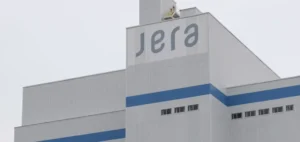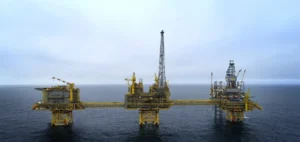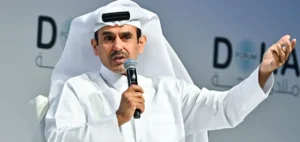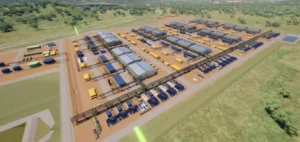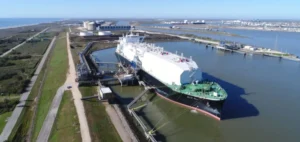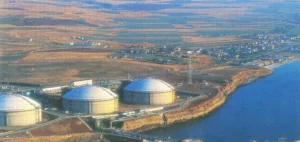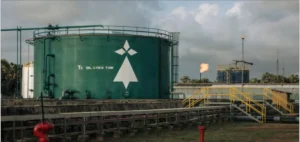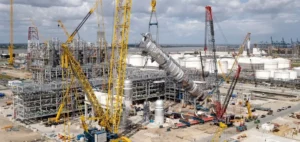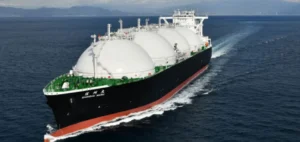Botaş is restructuring its gas supply portfolio around reinforced commitments in liquefied natural gas (LNG, liquefied natural gas) and a ramp-up in domestic production. The combination of multi-year purchases and additional volumes places import needs on a tighter trajectory. Requirements contract as domestic inputs grow and targeted contracts secure winter. This reconfiguration changes the addressable share for legacy pipeline suppliers.
LNG contracts and committed volumes
Botaş has signed Sale and Purchase Agreements (SPA, sale and purchase agreements) covering varied durations and profiles. A 20-year agreement with Mercuria covers 4.0 billion cubic meters per year (Bcma), mainly in the winter season. Short-term tranches with BP, Eni, Shell, Equinor, SEFE, JERA, and Cheniere add up to 9.8 Bcma over the targeted start period. Two prior 10-year contracts with ExxonMobil and Oman LNG reinforce the base from their planned commencement. From 2030, a heads of agreement with Woodside could add 5.8 Bcma over nine years if converted into an SPA.
These volumes are in addition to the existing agreement with Sonatrach, which runs until the end of 2027. The stacking of contracted flows mechanically reduces the spot market share. Regasification capacity, supplied by onshore terminals and floating storage and regasification units (FSRU, floating storage and regasification units), enables dispatch to the grid. Structuring by seasonal windows optimizes alignment with winter peaks. The contractual profile prioritizes security of supply without saturating the annual base.
Impact on competing suppliers
Botaş’s contracts with Gazprom for 21.75 Bcma by pipeline are nearing expiry, as is the agreement with National Iranian Gas Company (NIGC, National Iranian Gas Company) for 9.6 Bcma sometime after. In this context, the potential import space not covered by the new SPAs narrows between 2026 and 2028. Algerian contracted flows end at the close of 2027, adding another milestone for renegotiation. Pipeline imports from Azerbaijan remain secured over the period.
The gap between total demand and domestic production indicates imports around 45 Bcm by 2030, compared with a higher level previously. Given the new LNG commitments, the “pocket” available to Russia and Iran could be well below recent volumes. Botaş can seek time-limited extensions with reduced volumes. Competition between pipeline suppliers and spot LNG cargoes intensifies. Commercial terms become decisive in the marginal allocation.
Capacity, flexibility, and seasonality
Regasification terminals offer nominal capacity well above historical peaks, but the constraint is most visible in winter. In this framework, take-or-pay flexibility (take-or-pay, minimum purchase obligation) and monthly or daily nomination flexibility are key levers. A delivery split favoring cold months maximizes the utility of LNG volumes. The build-up of underground stocks improves seasonal coverage without replacing the role of winter contracts.
The ramp-up of the offshore Sakarya field increases the domestic share in the mix, with technical steps tied to development phases. This progression moderates overall import dependence. The calibration of contracted LNG flows aims to complement local production and pipeline deliveries while avoiding annual over-contracting. The whole composes a more granular portfolio responsive to demand profiles.
2026–2030 configuration and negotiation points
Over 2026–2028, contracted LNG volumes cover a growing share of needs, leaving a reduced window for renewing Russian and Iranian contracts. The possible introduction of additional volumes from 2030 via Woodside would further compress the uncovered pocket. Price terms, indexations, and offtake flexibility (offtake, offtake) become the sorting criteria. Suppliers’ ability to offer competitive formulas will weigh on the final split.
For Botaş, the objective is to balance winter security of supply and economic optimization. For legacy suppliers, the priority is to preserve shares through targeted concessions in price and flexibility. The trajectory of gas demand, the progression of renewables and nuclear, and the coal arbitration in power generation will influence the marginal tranche. These parameters will determine the value of short-duration extensions with adjusted volumes.





